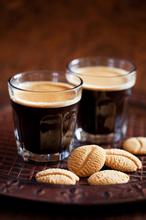Introduction to the varieties and characteristics of Coffee beans
Typica is also known as Tibica Tibika.
This is the closest Arabica species to its native species, where almost all Arabica varieties originated. In the past, it was widely cultivated in Central and South America, with long beans, excellent aroma and sour taste, but it is not resistant to leaf rust and requires quite a lot of shelter trees, resulting in low production (the same as bourbon). Colombia used to grow all caturrra varieties until 1967, but now 80-90% of them grow Kaddura, which is highly productive and resistant to direct sunlight, or a variety of Colombia (variedad Colombia). At present, there are very few pure Tibica on the Colombian market.
Bourbon (Bourbon)
Tibica is the best subspecies of Arabica, while bourbon is the second of Tibica mutations. These two are the oldest coffee varieties in existence. Bourbon was transplanted from Yemen to the eastern part of Madagascar in East Africa, to Bourbon Island in the Indian Ocean (now known as Reunion), and then to Brazil with French invaders. Characterized by small and round beans, mostly dense swarms. Therefore, the central line is S-shaped.
The yield is 20-30% higher than that of Dibica, but it is still too small compared with other high-yield varieties, and it is only harvested once every two years, so it is gradually replaced by other varieties. Bourbon mating and mutants such as mundo Novo and Catuai all belong to high quality aroma and alcohol thickness, and all have the characteristics of Tibica.
Kaddura (Caturra)
This is a bourbon mutant found in Brazil; the height of the tree is low, the bean has small grains, large yield and resistance to leaf rust. The disadvantage is that it only bears fruit every other year, that is, it can only be harvested once every two years. Although the quality is extremely high, the cost of care and fertilization is quite high. It is suitable for cultivation in the mid-highlands with an altitude of 450 ~ 1700 meters and annual rainfall of 2500 ~ 3500 mm. It is characterized by sour taste and slightly more astringent taste.
Mondonovu (Mundo Novo)
Natural mating between bourbon and Sumatra found in Brazil. High environmental adaptability and tolerance to diseases and insect pests Although it is a high-yield variety, it grows slowly and the beans are too big. the tree height of more than three meters is its disadvantage (this height has exceeded the height that can be reached by the harvester, so it is not suitable for the area of mechanized coffee harvesting). The top branches and leaves of the coffee tree must be trimmed every year. It was planted in the whole region of Brazil around 1950. Now Caturra and Catuai are the main varieties in Brazil. Mondonovu has a good balance of acidity and bitterness, and its taste is close to the original variety, so it was widely expected at the beginning of the market, and named it "mundo Novo".
Kaduai (Catuai)
The mating species of mundo Novo and Kaddura (Caturra). High yield and environmental adaptability, tree height (because the tree height is too high, which makes it difficult to harvest, so it will mate with the tree height Kaddura). Unlike Kaddura, Kaddura bears fruit year after year. Although it must be fully fertilized, it is resistant to diseases and insect pests And the fruit is not easy to fall in the face of strong wind and rain. only the fruit growth and harvest life is only about ten years, and its short life span is its weakness. it is mainly cultivated in the vast area from Colombia to Central America. Kaduai's taste is more monotonous and lacks mellow thickness.
Marago Gippe (Maragogype)
This is a Tibica mutant found in Brazil. the beans are large and need to be filtered with a sieve of more than 19 sieves. the taste is poor and the appearance is good, so it is favored by some markets. The tree is high, so the yield is low.
Kent (Kent)
A variety from India with high yield and strong resistance to diseases, especially leaf rust. It is considered to be a hybrid of Tibika and other varieties.
Amaret O (Amareiio)
Generally speaking, the fruit of coffee appears red when it is ripe, but the fruit of this variety is just as its name (Amareiio comes from the modern Latin Amareiius-, which means "yellow"). The fruit is yellow when it ripens. The tree is high, so the yield is high.
Cartimo (Catimor)
Born in Portugal in 1959, Timor (Alabica and Robsta) with strong leaf rust was mated with bourbon mutant Kaddura. Among the high-yield commercial varieties, it has the best growth length and the highest yield. the tree height is low and the coffee fruit and seeds (raw beans) are on the large side. There are quite a number of new varieties derived from Cartimo. The varieties of the Katimer series are strong, adaptable to the environment and high in yield. but in terms of taste, the low-real-estate Cartimo is not far different from other commercial varieties, but the Cartimo produced in the highlands above 1200 meters above sea level is obviously at a disadvantage compared with Bourbon, Kaddura, Kaduai and so on.

Important Notice :
前街咖啡 FrontStreet Coffee has moved to new addredd:
FrontStreet Coffee Address: 315,Donghua East Road,GuangZhou
Tel:020 38364473
- Prev

Introduction to the main producing areas of coffee beans
Introduction to coffee beans Coffee the origin of this plant can be traced back to millions of years ago, and the time when it was really discovered can no longer be tested. According to legend, Coffee is a shepherd named Kaldi in the Ethiopian Highlands. When he discovered that his sheep had inadvertently eaten the fruit of a plant, he became very lively and energetic, and discovered coffee ever since. All historians seem to be
- Next

Coffee beans in Sumatra, Indonesia
KARTIKA RED Kartika Red Tall trees with bright red pointed leaves longer red cherry. A natural hybrid variety of iron pickups. Growing area Lake Toba, Aceh. The Netherlands brought this variety to Sumatra for cultivation at high altitudes. After losing seeds for a while, the organic farm in Lake Toba restarted this rare specialty Arabica coffee bean.
Related
- Does Rose Summer choose Blue, Green or Red? Detailed explanation of Rose Summer Coffee plots and Classification in Panamanian Jade Manor
- What is the difference between the origin, producing area, processing plant, cooperative and manor of coffee beans?
- How fine does the espresso powder fit? how to grind the espresso?
- Sca coffee roasting degree color card coffee roasting degree 8 roasting color values what do you mean?
- The practice of lattes: how to make lattes at home
- Introduction to Indonesian Fine Coffee beans-- Java Coffee producing area of Indonesian Arabica Coffee
- How much will the flavor of light and medium roasted rose summer be expressed? What baking level is rose summer suitable for?
- Introduction to the characteristics of washing, sun-drying or wet-planing coffee commonly used in Mantenin, Indonesia
- Price characteristics of Arabica Coffee Bean Starbucks introduction to Manning Coffee Bean Taste producing area Variety Manor
- What is the authentic Yega flavor? What are the flavor characteristics of the really excellent Yejasuffi coffee beans?

